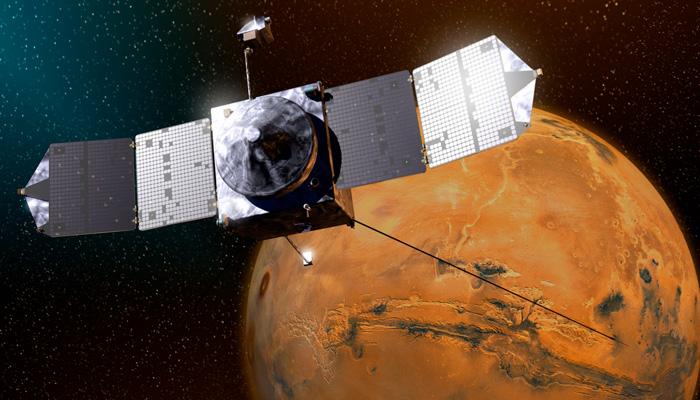NASA's MAVEN makes unscheduled maneuver to avoid hitting Mars' moon 'Phobos'
On Tuesday, February 28, 2017, the spacecraft carried out a rocket motor burn that boosted its velocity by 0.4 meters per second (less than 1 mile per hour).
Trending Photos
) Image credits: Lockheed Martin
Image credits: Lockheed Martin New Delhi: NASA said its MAVEN spacecraft made a previously unscheduled maneuver to avoid a collision next week with Mars’ moon Phobos.
NASA's Mars Atmosphere and VolatileEvolutioN (MAVEN) spacecraft has been orbiting the Red Planet for just over two years, studying its upper atmosphere, ionosphere and interactions with the sun and solar wind.
On Tuesday, February 28, 2017, the spacecraft carried out a rocket motor burn that boosted its velocity by 0.4 meters per second (less than 1 mile per hour).
Although a small correction, it was enough that - projected to one week later when the collision would otherwise have occurred - MAVEN would miss the lumpy, crater-filled moon by about 2.5 minutes, the US space agency said on Thursday.
With one week’s advance notice, it looked like MAVEN and Phobos had a good chance of hitting each other on Monday, March 6, arriving at their orbit crossing point within about 7 seconds of each other. Given Phobos’ size (modeled for simplicity as a 30-kilometer sphere, a bit larger than the actual moon in order to be conservative), they had a high probability of colliding if no action were taken.
“Kudos to the JPL navigation and tracking teams for watching out for possible collisions every day of the year, and to the MAVEN spacecraft team for carrying out the maneuver flawlessly,” said MAVEN Principal Investigator Bruce Jakosky of the University of Colorado in Boulder.
NASA said this is the first collision avoidance maneuver that the MAVEN spacecraft has performed at Mars to steer clear of Phobos.
Stay informed on all the latest news, real-time breaking news updates, and follow all the important headlines in india news and world News on Zee News.
Live Tv







)
)
)
)
)
)
)
)
)
)
